Two blocks lie on each other and connected to a spring as shown in figure. What should be the mass of blocks A placed on block B of mass 6 kg, so that the system's period is 0.75 s ? Assume no slipping, what should be the minimum value of coefficient of static friction μs for which block A will not slip relative to block B, if block B is displaced 50 mm from equilibrium position and released ?

2 kg, μs = 0.4
4.2 kg, μs = 0.358
2.56 kg, μs≥ 0.358
2.56 kg, μs≤ 0.358
The correct Answer is:C
T=2π√m1+m2kandμ=Aω2g
Topper's Solved these Questions
Similar Questions
With the assumption of no slipping, determine the mass m of the block which must be placed on the top of a 6kg cart in order that the system period is 0.75s. What is the minimum coefficient of static friction μs for which the block will not slip relative to the cart is displaced 50mm from the equilibrium position and released? Take (g=9.8m/s2).
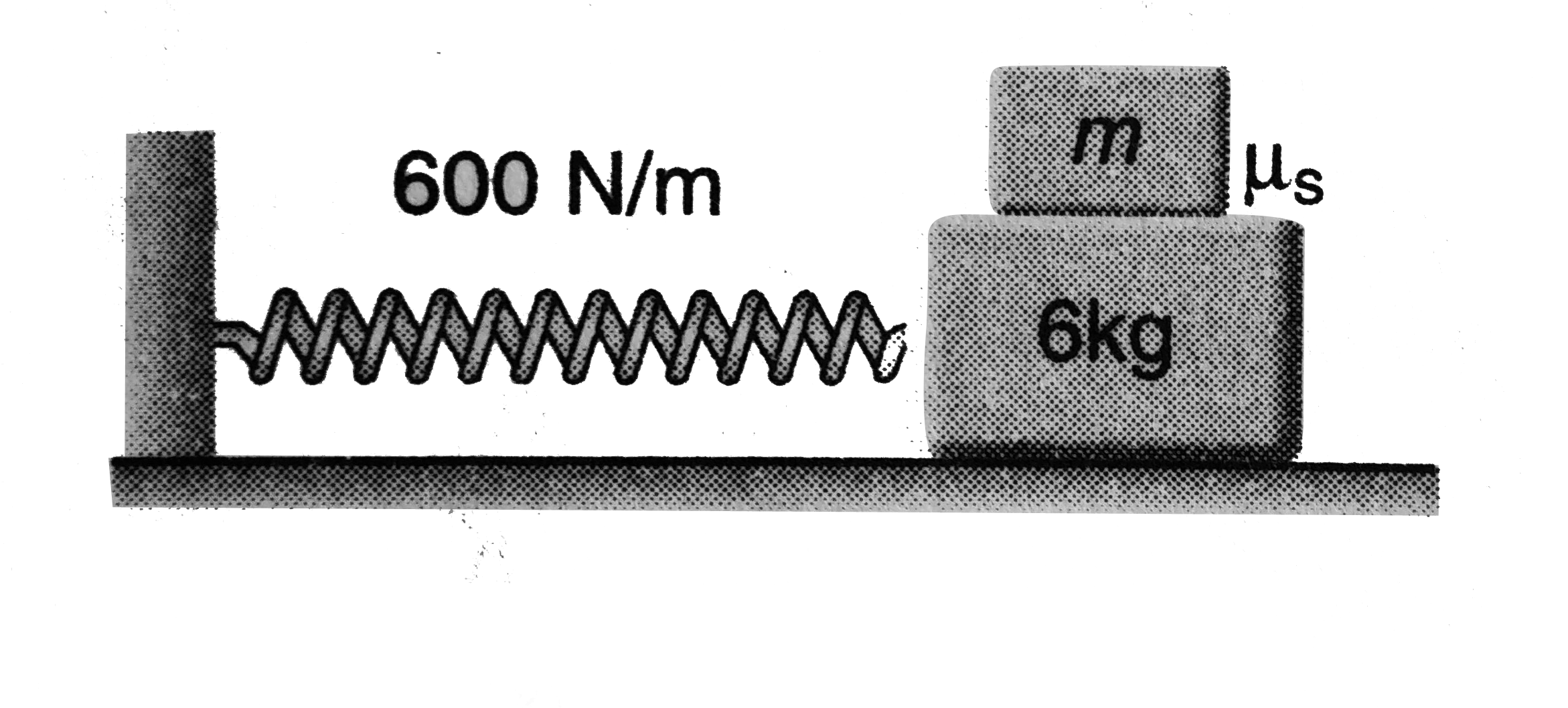 View Solution
View SolutionIn the arrangement shown in figure what should be the mass of block A, so that the system remains at rest ? Neglect friction and mass of string.
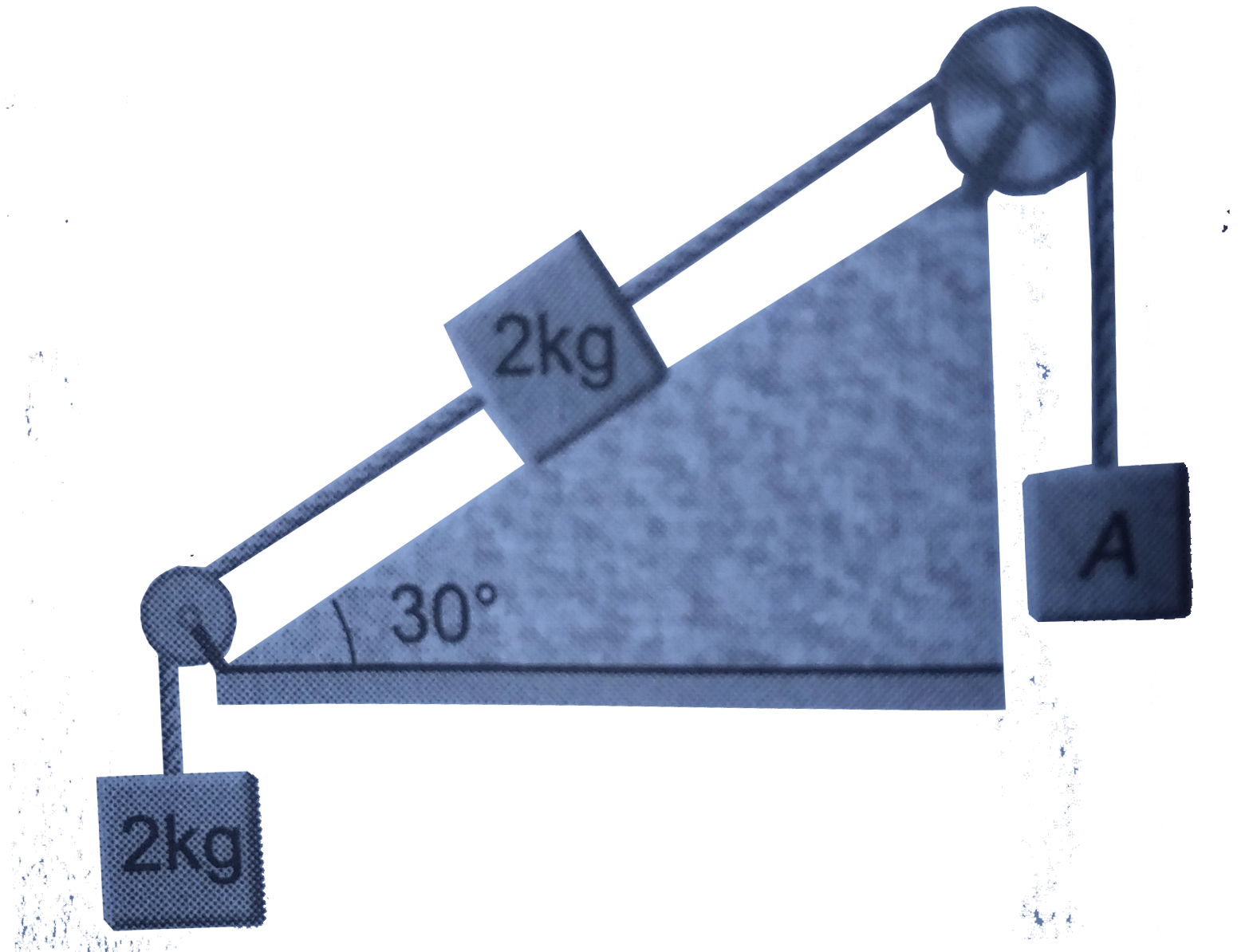 View Solution
View Solution
Knowledge Check
- Question 1 - Select One
A block of mass M is sliding down the plane. Coefficient of static friction is μs and kinetic friction is μk. Then friction force acting on the block is :
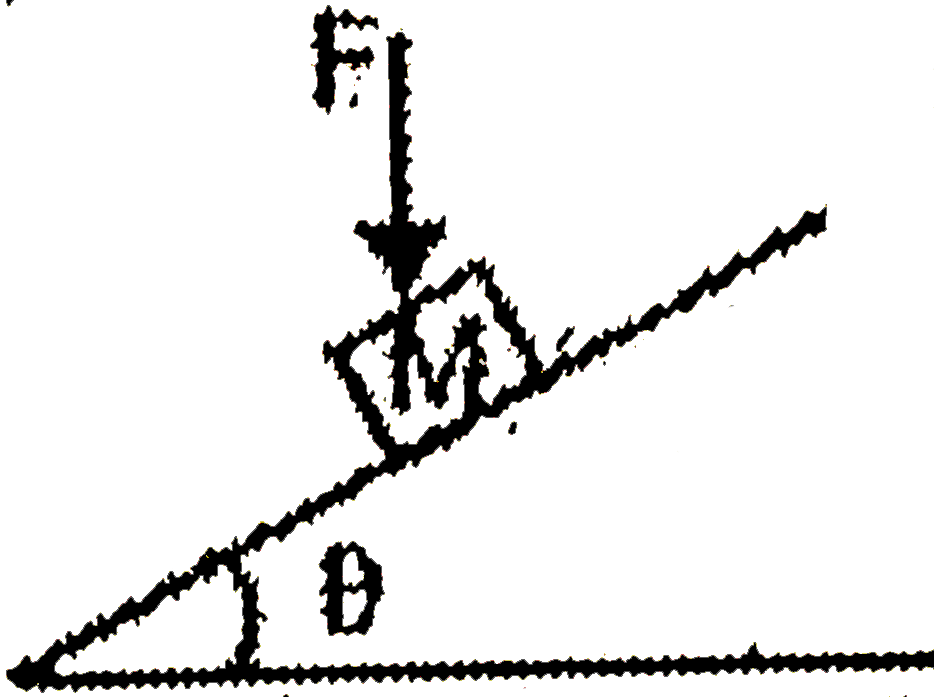 A(F+Mg)sinθBμk(F+Mg)cosθCμsMgcosθD(Mg+F)sinθ
A(F+Mg)sinθBμk(F+Mg)cosθCμsMgcosθD(Mg+F)sinθ - Question 2 - Select One
The minimum value of μ between the two blocks for no slipping is
 AFmgBF3mgC2F3mgD4F3mg
AFmgBF3mgC2F3mgD4F3mg - Question 3 - Select One
Two blocks are connected over a massless pulley as shown in figure. The mass of block A is 10 kg and the coefficient of kinetic friction is 0.2 Block A sliders down the incline at constant speed. The mass of block B in kg is
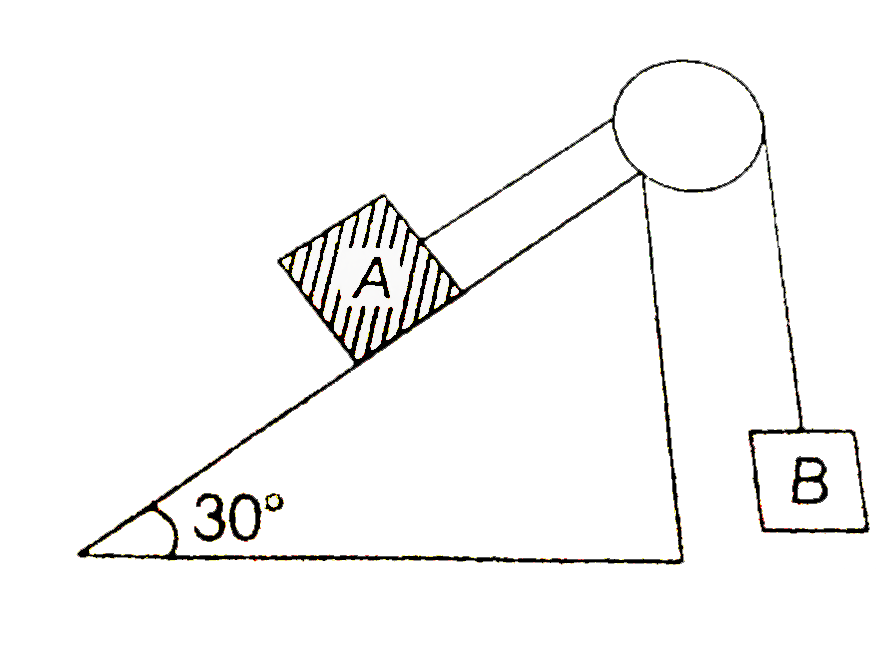 A5.4B3.3C4.2D6.8
A5.4B3.3C4.2D6.8
A block of mass m is supported on a rough wall by applying a force in figure Coefficient of static friction between block and wall is μ
For what range of value of p , the block remain in static equilibrium ?
 View Solution
View SolutionA block on table shown in is just on the edge of slipping Find the coefficient of static friction between the blocks and table
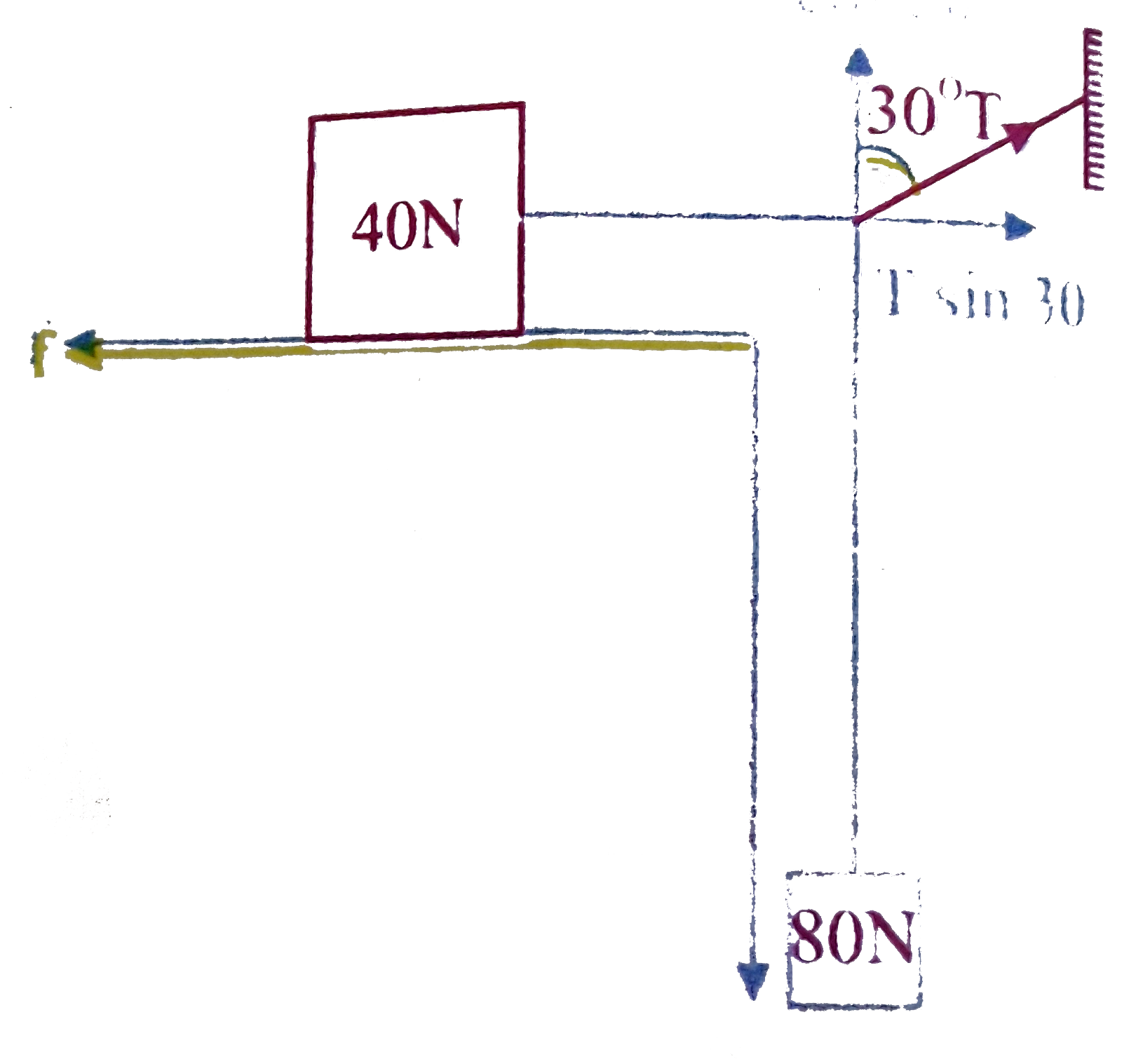 .View Solution
.View SolutionA block of mass M=4kg of height and breath b is placed on a rough plank of same mass M. A light inextensible string is connected to the upper end of the block and passed through a light smooth pulley as shown in figure. A mass m=1kg is hung to the other end of the string.
a. What should be the minimum value of coefficient of friction between the block and the plank so that, there is no slipping between the block and the wedge?
b. Find the minimum value of b/h so that the block does not topple over the plank, friction is absent between the plank and the ground.
 View Solution
View SolutionTwo blocks A & B are connected over a massless pulley as shown in figure.The mass of block A is 12 kg and the coefficient of kinetic friction between block A and fixed wedge is 0.5. Block A slides up the incline at constants speed. The mass of block B is?
View SolutionTwo block A and B are as shown in figure. The minimum horizantal force F applied to the block B for which slipping begins between B and ground is :
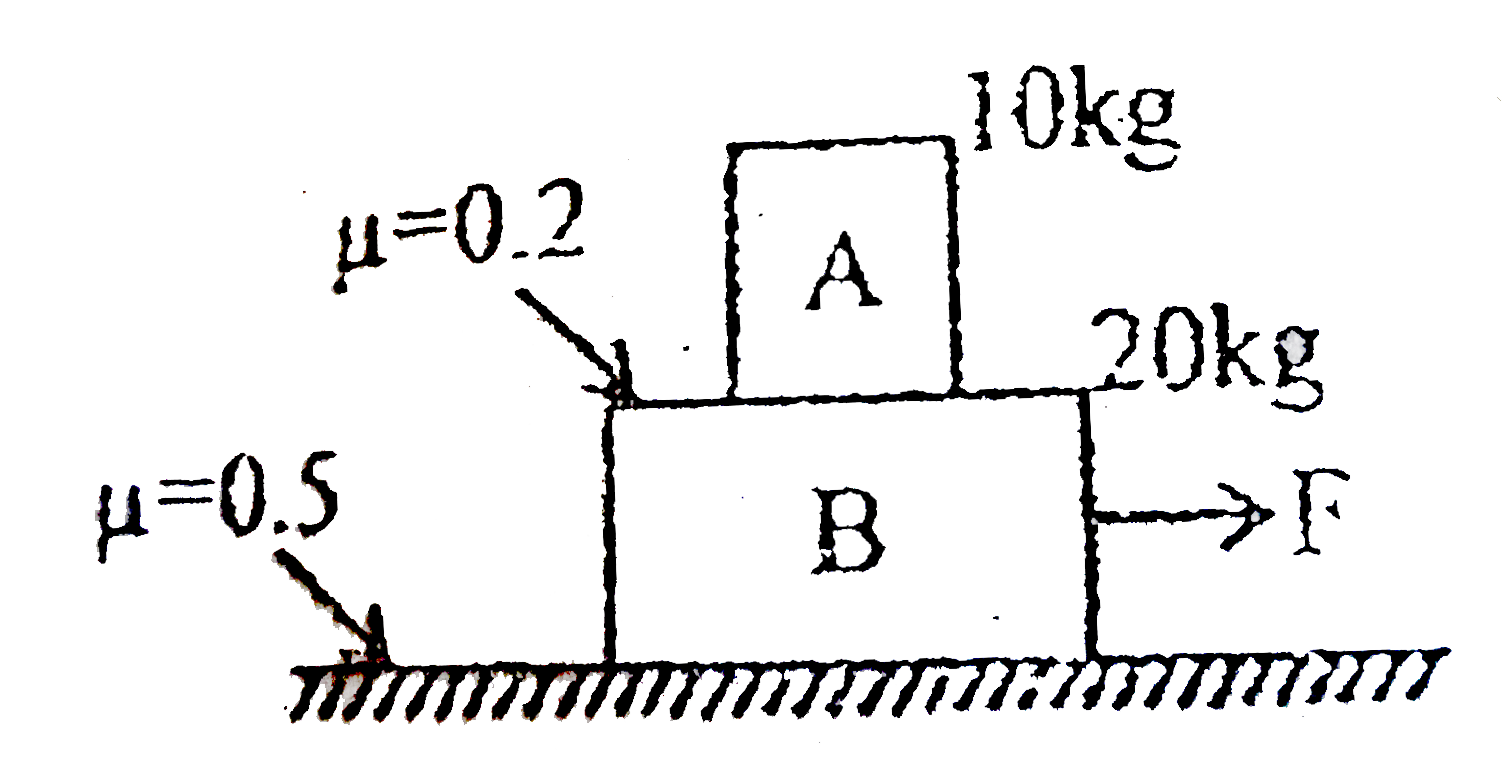 View Solution
View Solution

